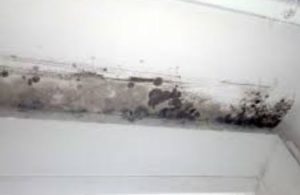Exposure to mold for an extended period can have severe effects on one’s health. For instance, you can have itchy or red eyes, headaches, itchy skin, respiratory problems, and stuffy nose. Studies show that millions of people suffer from asthma caused by dampness and mold in their homes. The truth is that mold causes a lot of unpleasant health issues calling for a need to eliminate it as soon as possible. Fortunately, you can choose mold remediation or mold removal service. In fact, it helps address the causes of the mold outbreak and ensure the problem does not occur again.
Inspection
This is the first step in mold remediation. In this case, your home is thoroughly inspected for signs of mold. Usually, experts take air samples to determine the type of mold in your home. This is necessary because airborne spores may have been triggered to reproduce. Understanding the type of mold helps the experts to choose the right techniques for dealing with the problem.
Containment
 After sealing off all areas of mold, you would say the mold is now contained. This is a great process of helping prevent the mold from spreading to other areas. You should note that there are different ways to contain mold. Remember that some areas may have physical barriers with negative air pressure and negative air chambers. Fans, heaters, and cooling systems in the house ought to be shut off. That is because the move mold spores across your home, making it drive in other areas.
After sealing off all areas of mold, you would say the mold is now contained. This is a great process of helping prevent the mold from spreading to other areas. You should note that there are different ways to contain mold. Remember that some areas may have physical barriers with negative air pressure and negative air chambers. Fans, heaters, and cooling systems in the house ought to be shut off. That is because the move mold spores across your home, making it drive in other areas.
Air Filtration
At this stage, efficient air filters are put into the HVAC unit to clear the house of active spores. In this way, you prevent spores from converting into fungi. Taking into account the contamination level, experts may suggest the use of HEPA filter vacuums to get rid of spores that may have settled on the floor.
Mold Clean-Up
Antimicrobial and anti-fungal detergents are used to clean up the existing mold. The good thing about this method is that it helps prevent the formation of mold. Ideally, this method is dependent on where the fungi grow. Hard locations and non-porous areas such as the sink or bathtub can be cleaned by adding a biocide.
Sanitize
This is the last step of the mold remediation process. Ideally, your property must be sanitized after finishing remediation. Furniture, curtains, and clothes ought to be cleaned. Even the air is deodorized.